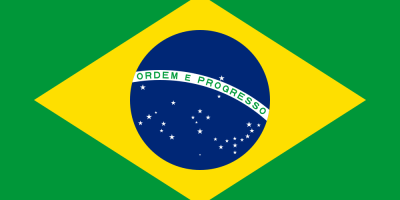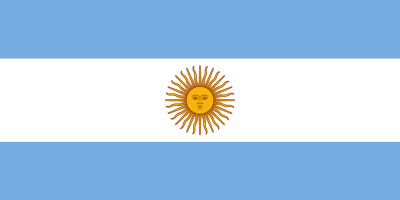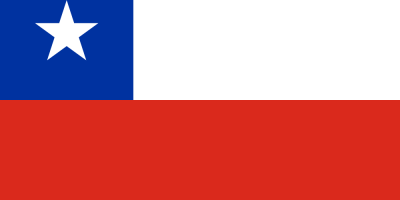Colombia flag color codes features bold stripes of yellow, blue, and red. To accurately depict this iconic tricolor design in digital or print projects, knowing the precise Colombia flag color codes is key. This article will provide the HTML hex, RGB, Pantone, HSL, CMYK, HWB, and NCOL values for the yellow, blue, and red tones of the Colombian flag. With the official Colombia flag color codes, developers, designers, and others can easily integrate the flag into websites, apps, infographics, artwork, clothing, and more. Whether crafting patriotic Colombian images or representing the country visually, having the exact flag color specifications is essential. Read on for the hex codes, RGB values, Pantone colors, and other official color data needed to precisely display the vibrant yellow, blue, and red stripes of the Colombian flag.
Table of Contents
What are the colors of Colombia flag?
The colors of the Colombian flag are:
- Yellow – The top horizontal band is yellow.
- Blue – The middle horizontal band is blue.
- Red – The bottom horizontal band is red.
So in summary, the three colors of the Colombian flag are yellow, blue and red arranged in equal horizontal bands.
The yellow band is positioned at the top, the blue band in the middle, and the red on the bottom when the flag is displayed vertically. These colors are vibrant and eye-catching.
Colombia flag color codes & Color Names:
YELLOW
| Color Model | Value |
|---|---|
| HTML | #FFD100 |
| HEX | FFDD00 |
| RGB | 255, 221, 0 |
| PANTONE | 109 C |
| HSL | 50°, 100%, 50% |
| CMYK | 0%, 13%, 100%, 0% |
| HWB | 50°, 0%, 0% |
| NCOL | – |
BLUE
| Color Model | Value |
|---|---|
| HTML | #0033A0 |
| HEX | 0033A0 |
| RGB | 0, 51, 160 |
| PANTONE | 287 C |
| HSL | 220°, 100%, 31% |
| CMYK | 100%, 90%, 0%, 0% |
| HWB | 220°, 0%, 37% |
| NCOL | – |
RED
| Color Model | Value |
|---|---|
| HTML | #CE1126 |
| HEX | CE1126 |
| RGB | 206, 17, 38 |
| PANTONE | 186 C |
| HSL | 357°, 84%, 44% |
| CMYK | 5%, 100%, 100%, 12% |
| HWB | 357°, 0%, 19% |
| NCOL | – |
What is the meaning of colors in the Colombia flag?
The colors of the Colombian flag represent the following:
- Yellow – The yellow band symbolizes the gold and mineral wealth of Colombia. It also represents sovereignty and justice.
- Blue – The blue band represents the seas, sky, and the courage of the Colombian people.
- Red – The red band symbolizes the blood spilled and fought for the nation’s independence.
In summary:
- Yellow represents wealth, sovereignty and justice.
- Blue represents the oceans, sky and courage.
- Red represents the bloodshed and sacrifice for independence.
The vibrant three band tricolor design was officially adopted in 1861. The yellow, blue and red have become iconic symbols of Colombia, representing the country’s ideals and aspirations. The meaning behind each color makes the flag a bold national emblem.
Explore More Flag Colors:
FAQs: Frequently Asked Questions:
Is Colombia a poor or rich country?
Colombia is considered a middle-income country. It is not classified as a high-income country, but it is not among the poorest either. Like many nations, Colombia has a diverse economic landscape, with variations in income levels and living standards among its population.
What is the religion of Colombia?
Colombia is a religiously diverse country, and it does not have an official state religion. The majority of the population in Colombia identifies as Christian, with the largest denomination being Roman Catholicism. However, there is also a growing presence of Protestant and Evangelical Christian communities.
Do I need a visa for Colombia?
visa requirements for Colombia may vary depending on your nationality and the purpose and duration of your visit. It’s essential to check the most up-to-date information from official sources or consult with the nearest Colombian consulate or embassy.
What are 5 facts about Colombia?
Geographical Diversity:
Colombia is known for its incredible geographical diversity, featuring coastlines along both the Pacific Ocean and the Caribbean Sea. The country also encompasses the Amazon rainforest, the Andes mountain range, and vast plains. This diversity contributes to a wide range of ecosystems and climates.
Biodiversity:
Colombia is one of the world’s most biodiverse countries, hosting a significant portion of the planet’s species. The country is home to a variety of ecosystems, including rainforests, paramos, and coral reefs. Colombia ranks second globally in bird species diversity and has a rich array of plants, mammals, and amphibians.
Cultural Heritage:
Colombia has a rich cultural heritage with influences from Indigenous, African, and Spanish traditions. The country celebrates a variety of festivals and events throughout the year, showcasing its vibrant music, dance, and folklore. Colombian cuisine is diverse, with regional specialties, and the country is known for its coffee production.
Peace Process:
Colombia has experienced periods of internal conflict, primarily involving guerrilla groups, paramilitaries, and government forces. In recent years, significant strides have been made toward peace. The Colombian government and the Revolutionary Armed Forces of Colombia (FARC) signed a historic peace agreement in 2016, marking a positive step toward ending the long-standing conflict.
Emerging Economy:
Colombia has a growing and diverse economy. While historically associated with coffee production, the country has developed other economic sectors, including oil and gas, mining, and manufacturing. Bogotá, the capital, is a major financial and economic hub in the region. Colombia is considered one of the emerging economies in South America.
Is Colombia a safe country?
Key points regarding safety in Colombia:
Improved Security: Over the years, Colombia has successfully addressed security concerns, especially in major cities and tourist destinations. Cities like Bogotá, Medellín, and Cartagena have experienced positive transformations and increased safety.
Tourist Areas: Popular tourist destinations in Colombia are generally considered safe for visitors. These areas often have a visible police presence and take measures to ensure the safety of tourists.
Rural Areas and Border Regions: Some rural areas, as well as regions near international borders, may still face security challenges. It’s advisable to research specific areas and check travel advisories before planning visits to such locations.
Personal Safety Measures: Travelers should exercise common sense and take basic safety precautions, such as avoiding poorly lit areas at night, securing belongings, and being aware of their surroundings.
Natural Disasters: Colombia is prone to natural disasters such as earthquakes and landslides. Travelers should stay informed about local conditions, especially during the rainy season.
Health Precautions: Like in many countries, travelers to Colombia should be aware of health-related risks and take necessary vaccinations or precautions. This includes staying informed about local health guidelines and potential disease outbreaks.
Is Colombia cheap to live?
Here are some factors to consider:
Housing: Rent and property prices vary, with major cities like Bogotá and Medellín generally having higher costs compared to smaller towns. In less urbanized areas, housing expenses can be more affordable.
Transportation: Public transportation in Colombia is often inexpensive, and taxis are generally more affordable than in many Western countries. However, private car ownership and associated costs may vary.
Food: Grocery prices can be reasonable, especially if you buy local and seasonal produce. Eating out at local eateries and street food stalls is often more economical than dining in upscale restaurants.
Healthcare: Healthcare costs in Colombia can be significantly lower than those in some Western countries. The quality of healthcare varies, with major cities having better medical facilities.
Utilities and Services: Costs for utilities like electricity, water, and internet can be reasonable, but they may vary by region. Some expatriates find that these services are more affordable compared to their home countries.
Entertainment and Leisure: Costs for entertainment, cultural activities, and leisure can vary. Entrance fees to attractions, tickets for events, and dining out can be affordable, especially in local establishments.
Are there Muslims in Colombia?
Yes, there is a small but growing Muslim community in Colombia. The majority of the Colombian population is predominantly Christian, with Roman Catholicism being the most widely practiced religion. However, in recent years, there has been an increase in religious diversity, including the presence of Muslim communities.
What is Colombia best known for?
Colombia is best known include:
Coffee: Colombia is renowned for producing high-quality coffee. Colombian coffee is considered some of the best in the world, and the country’s coffee regions, such as the Coffee Triangle, attract tourists interested in coffee plantations and production.
Emeralds: Colombia is a major producer of emeralds, and the country’s emeralds are highly valued for their quality and color. The Muzo and Chivor mines are particularly famous for producing exceptional emeralds.
Breathtaking Landscapes: Colombia’s diverse geography includes stunning landscapes such as the Amazon rainforest, the Andes mountain range, beautiful beaches along the Caribbean and Pacific coasts, and picturesque valleys. The country’s natural beauty attracts eco-tourists and outdoor enthusiasts.
Cultural Festivals: Colombia hosts vibrant and colorful cultural festivals throughout the year. The Carnaval de Barranquilla, for example, is one of the largest carnivals in the world, featuring parades, music, and traditional dances.
Historical Cities: Cities like Cartagena, Bogotá, and Medellín are known for their rich history and well-preserved colonial architecture. Cartagena, in particular, is a UNESCO World Heritage site and a popular destination for tourists.
Gabriel García Márquez: Colombia is the birthplace of the Nobel Prize-winning author Gabriel García Márquez, known for his magical realism. His works, such as “One Hundred Years of Solitude,” have left a significant impact on world literature.
Warm Hospitality: Colombian people are often recognized for their warm and welcoming hospitality. Visitors often remark on the friendliness of the locals and the vibrant, lively atmosphere in Colombian cities and towns.
Salsa Music and Dance: Colombia has a strong tradition of salsa music and dance. Cities like Cali are famous for their salsa clubs and vibrant dance scenes. The annual Cali Fair showcases the city’s passion for salsa.
What is the money of Colombia?
The official currency of Colombia is the Colombian Peso, and its symbol is “$” with the ISO code “COP” (Colombian Peso). Banknotes and coins are issued in various denominations.













